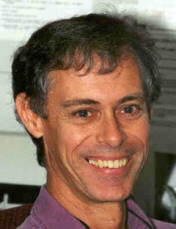

David E. Padgett,
Professor of Biological Sciences
The University of North Carolina at Wilmington
601 South College Road
Wilmington, NC 28403 USA
e-mail Padgett@uncwil.edu
Education:
BA Duke University, 1967 (Religion)
MSc The Ohio State University, 1973 Botany with subspecialty in Mycology
PhD The Ohio State University, 1975 Botany with subspecialty in aquatic fungal ecology
Teaching specialties:
Botany, general mycology, human fungal diseases
Research interests:
Morphology and ecology of salt-tolerant fungi and stramenopilous fungal allies:
I have published on the following mycological questions most of which focus on ecologically significant activities of filamentous fungi.
- Estuarine distribution and salinity tolerance of saprolegniaceous species (Kingdom Stramenopila) that cause diseases of estuarine fishes
- Filamentous higher fungi that invade and decompose buried plant detritus in salt marsh sediments
- Quantification of fungal secondary production on submerged woody substrates as reflected by the unique membrane sterol ergosterol
- Effects of nutrient enrichment on aquatic fungal growth and the potential of fungal secondary production as an indicator of water quality
- Distinguishing between prokaryotic and eukaryotic contributions to decomposition of salt marsh cordgrass detritus
Uses of the salt marsh smooth cordgrass (Spartina alterniflora) for vegetating created coastal marshes:
My publications have documented that clonal spread of cordgrass is significantly affected by the organic content of coastal soils into which it is transplanted. Currently, I am collaborating with two colleagues in the UNCW math department on morphometric modeling of cordgrass. The ultimate aim of the latter project is to determine what minimum information about this plant must be known in order to predict its mass without destructive harvest.
Characterization of an isolate of Saprolegnia unispora (Stramenopila, Oomycota) with unusual zoosporangial discharge:
Two of my recent undergraduate mycology students (Ginny Puckett and Wendy Strickland) isolated this organism from non-saline soils near the UNCW campus. It is unique in that its zoosporangia discharge marginally-motile, apically-biflagellate, pyriform primary zoospores that " hover" in the vicinity of the discharge papilla in a loosely-defined "cloud" that settles slowly to the bottom of the culture dish. Because the primary spores from a particular sporangium settle as a group they form well-defined clusters on the bottom of the culture dish which can be located easily using a dissecting microscope. Individual spores of a cluster often exhibit slow rocking movement for up to a minute even after settling, then encyst. Primary spore cysts discharge laterally-biflagellate, reniform secondary zoospores typical of the genus after approximately 3 hours of dormancy.
This sporangial discharge is distinctly different both from that of the related genus Achlya whose non-motile primary spores encyst in a tight clump at the sporangial orifice, and from other species of Saprolegnia, whose primary spores quickly swim away from the discharge papilla in all directions. We believe that it is an aberrant isolate of S. unispora because of the close agreement of its sexual structures to that of the original description.
Digital video clips illustrating this discharge process can be accessed by clicking on one of the options below. Both clips depict an undischarged sporangium that quickly releases its primary spore "cloud" then follows the non-motile cluster as it settles to the bottom of the culture dish. In the last frame, note that the cluster is well defined and that the individual spores are rocking slowly as if they are trying to attain full motiliy. The high-resolution viewing option requires Real Video G2 software (which can be downloaded free below) and a high speed internet connection. Persons using a standard modem will need to download the Quicktime version (which requires Quicktime software also available free below).
Click here to download the Quicktime Viewer
Link to Watermold Treatise
NEW! Link to Course Materials